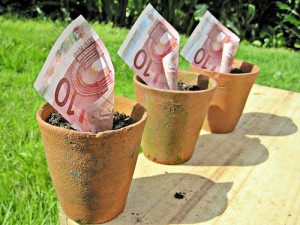by Shawna Ganley, former visiting scholar and CCCL contributor
The Center for Climate Change Law has published a new white paper on “green product procurement” in the European Union, building on a recent CCCL paper on sustainable procurement policies in the United States. With approximately 19% of the EU’s GDP going to government purchases,[i] “green procurement” policies could potentially have a sizable impact on carbon emissions, and moreover could bolster the larger consumer market for sustainable goods. The European Commission (EC) has been proactive in this area and has increasingly sought ways to promote “green products” through government purchasing power. Several years ago it established a goal of 50% “green” procurement by all Member States, though uptake of these policies has not been as robust as the Commission had hoped. While many EU Members have made strides towards sustainable purchasing in the EU, green procurement varies greatly among EU countries.
The white paper reviews current EC policy in this area, focusing particularly on the way in which the EC treats lifecycle analysis and non-product related “process and production methods” (PPMs), criteria that relate to the way in which the product was produced rather than to the physical properties of the final product. The paper also addresses some of the factors that may have stymied better uptake of green product procurement in the EU. For example, while the EC has a handful of mandatory sustainable procurement directives in particular sectors, otherwise its general procurement directives do not require minimum environmental attributes in public contracts; the policy merely encourages Member States to include various environmental specifications in their procurement programs.[ii] In addition, for those Member States that do wish to incorporate sustainability into procurement, the EC’s current procurement directives leave open the question of to what extent agencies may make purchasing decisions based on full lifecycle analysis or other environment-friendly preferences for low-carbon production methods. Further, while product procurement is often tied to the EU Ecolabel, this does not assure full consideration of environmental factors in the award criteria for public contracts.
Despite these limitations, the CCCL white paper explains that the EC is in the process of adopting policy changes that will likely enhance the ability of EU Member States to take upstream environmental impacts into account. This, in turn, could enable the EU to influence the broader market for green products by encouraging a shift towards upstream, supply chain carbon accounting. First, the EC is in the pilot phase of its uniform ‘product environmental footprint’ methodology,[iii] a type of lifecycle analysis which should make it easier for procuring agencies to compare bids between products for which vendors have voluntarily computed a product footprint. Second, the EC is overhauling its 2004 general procurement directives, a process that will determine the leeway that Member States will have to take upstream carbon emissions into account in procurement, as well as the degree to which the Commission may mandate them to do so.[iv] As the new paper describes, these changes will likely operate to give Member States greater authority than under the existing directives to incorporate—and perhaps require—cradle-to-grave carbon analysis in their product procurement policies.
The upcoming choices the EC makes as to these procurement policies could have far reaching effects by contributing to wider adoption of LCA accounting, which could prompt greater supply chain control of greenhouse gas emissions in the consumer products sector. The CCCL white paper assesses these proposals and suggests ways to maximize their effectiveness to do so.
The paper can be found on the CCCL web page at: https://web.law.columbia.edu/climate-change.
[i] See Ireland Department of Public Expenditure and Reform, Presidency Pursues Agreement on EU Public Procurement Package (May 2, 2013), found at: https://per.gov.ie/2013/05/02/presidency-pursues-agreement-on-eu-public-procurement-package/.
[ii] Directive 2004/17/EC, Coordinating the Procurement Procedures of Entities Operating in the Water, Energy, Transport and Postal Services Sectors (March 31, 2004); Directive 2004/18/EC, On the Coordination of Procedures for the Award of Public Works Contracts, Public Supply Contracts and Public Service Contracts (March 31, 2004) (2004 general procurement directives).
[iii] See 2013/179/EU, Commission Recommendation of 9 April 2013 on the Use of Common Methods to Measure and Communicate to Measure and Communicate the Life Cycle Environmental Performance of Products and Organizations (May 2013).
[iv] See COM/2011/0896 final; see also A7-0007/2013, Report on the Proposal for a Directive of the European Parliament and of the Council on Public Procurement, Committee on the Internal Market and Consumer Protection (September 1, 2013).
Photo courtesy of Images_of_Money



